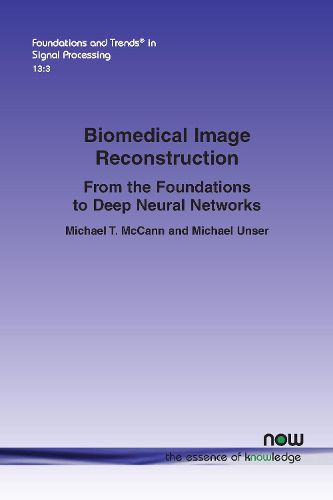Readings Newsletter
Become a Readings Member to make your shopping experience even easier.
Sign in or sign up for free!
You’re not far away from qualifying for FREE standard shipping within Australia
You’ve qualified for FREE standard shipping within Australia
The cart is loading…






This title is printed to order. This book may have been self-published. If so, we cannot guarantee the quality of the content. In the main most books will have gone through the editing process however some may not. We therefore suggest that you be aware of this before ordering this book. If in doubt check either the author or publisher’s details as we are unable to accept any returns unless they are faulty. Please contact us if you have any questions.
Biomedical imaging is a vast and diverse field. There are a plethora of imaging devices using light, X-rays, sound waves, magnetic fields, electrons, or protons, to measure structures ranging from nano to macroscale. In many cases, computer software is needed to turn the signals collected by the hardware into a meaningful image. These computer algorithms are similarly diverse and numerous.This survey presents a wide swath of biomedical image reconstruction algorithms under a single framework. It is a coherent, yet brief survey of some six decades of research. The underpinning theory of the techniques are described and practical considerations for designing reconstruction algorithms for use in biomedical systems form the central theme of each chapter.
The unifying framework deployed throughout the monograph models imaging modalities as combinations of a small set of building blocks, which identify connections between modalities. Thus, the user can quickly port ideas and computer code from one to the next. Furthermore, reconstruction algorithms can treat the imaging model as a black. box, meaning that one algorithm can work for many modalities. This provides a pragmatic approach to designing effective reconstruction algorithms.This monograph is written in a tutorial style that concisely introduces students, researchers and practitioners to the development and design of effective biomedical image reconstruction algorithms.
$9.00 standard shipping within Australia
FREE standard shipping within Australia for orders over $100.00
Express & International shipping calculated at checkout
This title is printed to order. This book may have been self-published. If so, we cannot guarantee the quality of the content. In the main most books will have gone through the editing process however some may not. We therefore suggest that you be aware of this before ordering this book. If in doubt check either the author or publisher’s details as we are unable to accept any returns unless they are faulty. Please contact us if you have any questions.
Biomedical imaging is a vast and diverse field. There are a plethora of imaging devices using light, X-rays, sound waves, magnetic fields, electrons, or protons, to measure structures ranging from nano to macroscale. In many cases, computer software is needed to turn the signals collected by the hardware into a meaningful image. These computer algorithms are similarly diverse and numerous.This survey presents a wide swath of biomedical image reconstruction algorithms under a single framework. It is a coherent, yet brief survey of some six decades of research. The underpinning theory of the techniques are described and practical considerations for designing reconstruction algorithms for use in biomedical systems form the central theme of each chapter.
The unifying framework deployed throughout the monograph models imaging modalities as combinations of a small set of building blocks, which identify connections between modalities. Thus, the user can quickly port ideas and computer code from one to the next. Furthermore, reconstruction algorithms can treat the imaging model as a black. box, meaning that one algorithm can work for many modalities. This provides a pragmatic approach to designing effective reconstruction algorithms.This monograph is written in a tutorial style that concisely introduces students, researchers and practitioners to the development and design of effective biomedical image reconstruction algorithms.